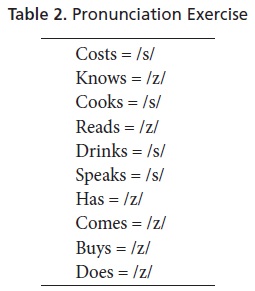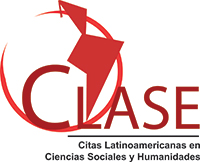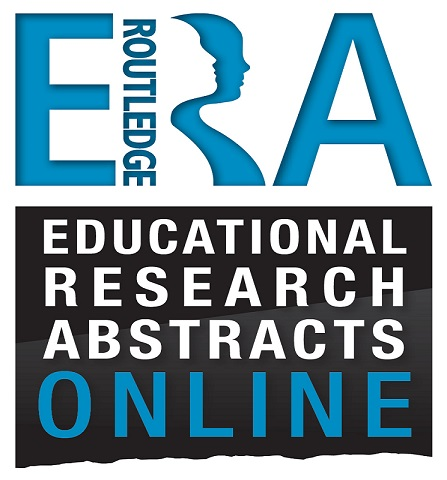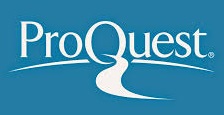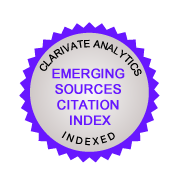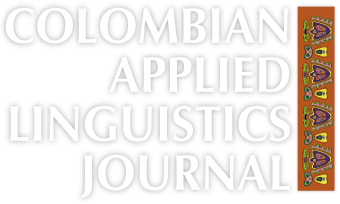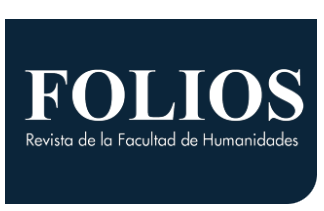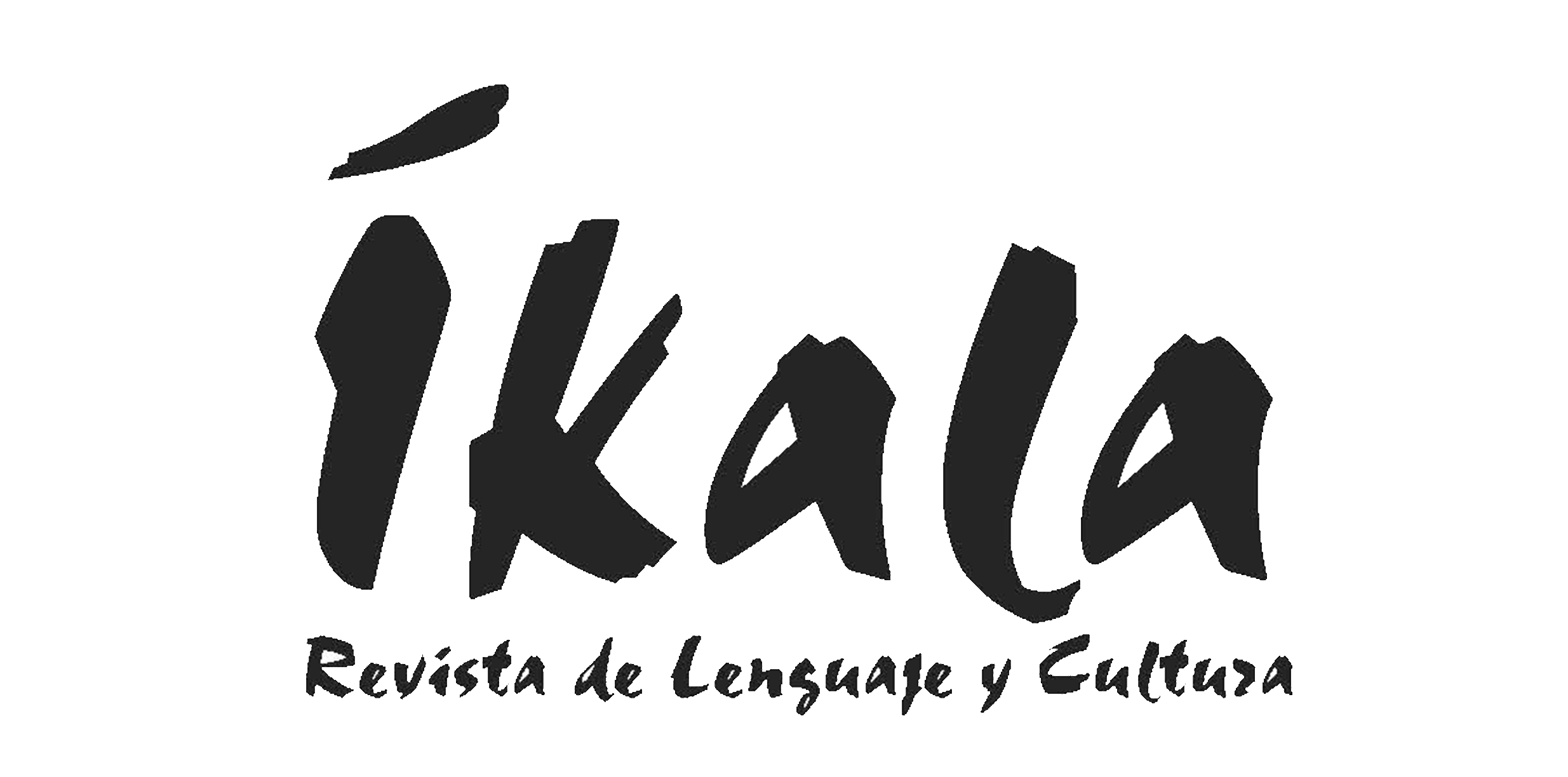
Published
Understanding the Role of Teaching Materials in a Beginners’ Level English as a Foreign Language Course: A Case Study
El papel de los materiales de enseñanza en un curso de inglés para principiantes: un estudio de caso
DOI:
https://doi.org/10.15446/profile.v18n2.52813Keywords:
Alternative material, beginners, course book, English as a foreign language, teaching materials (en)inglés como lengua extranjera, libro de texto, material alternativo, materiales de enseñanza, principiantes (es)
https://doi.org/10.15446/profile.v18n2.52813
Understanding the Role of Teaching Materials in a Beginners’ Level English as a Foreign Language Course: A Case Study
El papel de los materiales de enseñanza en un curso de inglés para principiantes: un estudio de caso
Elio Jesús Cruz Rondón*
Leidy Fernanda Velasco Vera**
Universidad de Pamplona, Pamplona, Colombia
*elio.cruz@unipamplona.edu.co
**leidy.velasco@unipamplona.edu.co
This article was received on August 31, 2015, and accepted on February 10, 2016.
How to cite this article (APA 6th ed.):
Cruz Rondón, E. J., & Velasco Vera, L. F. (2016). Understanding the role of teaching materials in a
beginners’ level English as a foreign language course: A case study. PROFILE Issues in Teachers' Professional Development, 18(2), 125-137. https://doi.org/10.15446/profile.v18n2.52813.
This is an Open Access article distributed under the terms of the Creative Commons license Attribution-NonCommercial-NoDerivatives 4.0 International License. Consultation is possible at http://creativecommons.org/licenses/by-nc-nd/4.0/.
Learning a foreign language may be a challenge for most people due to differences in the form and structure between one’s mother tongue and a new one. However, there are some tools that facilitate the teaching and learning of a foreign language, for instance, new applications for digital devices, video blogs, educational platforms, and teaching materials. Therefore, this case study aims at understanding the role of teaching materials among beginners’ level students learning English as a foreign language. After conducting five non-participant classroom observations and nine semi-structured interviews, we found that the way the teacher implemented a pedagogical intervention by integrating the four language skills, promoting interactive learning through the use of online resources, and using the course book led to a global English teaching and learning process.
Key words: Alternative material, beginners, course book, English as a foreign language, teaching materials.
El aprendizaje de una nueva lengua puede ser un reto para la mayoría de la gente debido a las diferencias en la forma y en la estructura entre la lengua materna y la nueva; sin embargo, hay algunas herramientas que facilitan la enseñanza y el aprendizaje de una lengua extranjera. Este estudio de caso tiene por objetivo comprender el papel de los materiales de enseñanza y su contribución a los aprendices de nivel elemental del inglés. Por medio de cinco observaciones de clase no participante y nueve entrevistas semi-estructuradas, se encontró que el profesor integró las cuatro habilidades lingüísticas, los recursos en línea promovieron un aprendizaje interactivo, y el libro de texto lideró un proceso integral de enseñanza y aprendizaje del inglés.
Palabras clave: inglés como lengua extranjera, libro de texto, material alternativo, materiales de enseñanza, principiantes.
Introduction
Foreign language teachers should implement a myriad of instructional materials to “help to teach language learners” (Harsono, 2007, p. 170). For example, applications for digital devices, video blogs, educational platforms, and textbooks, among others, are essential to teach English as a foreign language (EFL). However, according to Oviedo, “most EFL teachers in Colombia seem to rely on a course book usually produced by a ‘North’ American or British publisher and sold as a global course book in many parts of the world” (as cited in Macías, 2010, p. 12). Although English teachers use several materials in the classroom, the course book remains to be the most frequently utilized resource when it comes to choosing what materials to implement to teach EFL. As undergraduate researchers we decided to focus our attention on the teaching materials implemented in an EFL classroom in order to understand how they were used and how students reacted towards their implementation in the class. Consequently, this case study was carried out in a beginners’ level English course in a Bachelor of Arts in Foreign Languages program at a public university in Colombia. The participants consisted of 21 students (10 girls and 11 boys). The purpose of this study was to understand the role of teaching materials in an EFL classroom and to identify the students’ reactions towards their implementation. This research attempted to answer three questions: What are the teaching materials implemented in a beginners’ EFL classroom? How are the teaching materials implemented? And how do beginner level students of English react towards the implementation of the teaching materials?
Literature Review
Extensive research has explored the variety of teaching materials implemented in the class. For this inquiry, studies were classified into three main areas: firstly, the use of authentic materials in an EFL classroom (Kelly, Kelly, Offner, & Vorland, 2002; Kilickaya, 2004; Tamo, 2009). These authors found that the use of these resources had a positive effect on learner motivation; they provided authentic cultural information, as well as exposure to real language, and they supported a more creative approach to teaching. However, their research also revealed that authentic materials often contain difficult language, unneeded vocabulary, and complex language structures, which can cause unnecessary difficulties for the teacher in lower-level classes. Secondly, the role of course books and the positive and negative aspects of using a course book (Bonilla Medina, 2008; Charalambous, 2011; Chou, 2010; Issa, 2007; Zohrabi, 2011). According to these authors, the course book serves as a tool for teachers to support their classes and reinforce students’ independent work. Course books also state the lesson objectives, explaining what the learners are expected to do. They may catch students’ attention as they have visual images and include different activities for each module in order to develop the four key language skills (listening, speaking, reading, and writing). However, the use of a course book may encompass a restrictive process where the teacher follows a repetitive format: reading the instructions, completing the exercise, and making corrections. Thirdly, the studies conducted by García Laborda (2011), Harsono, (2007), Harwood (2010), Johansson (2006), Kitao and Kitao (1997), and Tomlinson (2012) examined the appropriateness and implementation of teaching materials, highlighting the importance of selecting teaching materials in accordance with the learners’ needs, evaluating the pertinence of materials for their students, and adapting them if necessary. Moreover, the implementation of teaching materials usually follows one of these conditions: using an existing material, adapting any material to specific criteria, and creating a new material suitable for the teacher and students’ needs.
Context and Pedagogical Implementation
In this study, participants took four lessons a week. Each lesson lasted two hours and was held either in an ordinary classroom or in a language laboratory. The classrooms were spacious and comfortable. The language laboratory was equipped with an interactive whiteboard, speakers, and 30 personal computers. At the beginning of the elementary English course, students were given the names of three books to read throughout the semester: The Canterville Ghost, Lord Arthur Savile’s Crime, and The Model Millionaire along with a list of activities to be completed. For example: doing a role-play, creating a song, making a comic strip, creating a newspaper and writing a horoscope for the book characters.
The first activity that we observed was the role play. First, students read the selected book individually. Then, in groups of four or five, the participants wrote a script for a creative role-play. Finally, they performed the role-play in their English class in front of the teacher and their classmates. Students presented four roleplays throughout the four observations we did; three of them were about the summary of the corresponding chapters and the other was about changing the end of the story. The use of role-plays allowed students to integrate reading, writing, and speaking as they read the two chapters from one of the three set texts. They then wrote the script for the role play, and third, they performed the finished product.
The second activity, writing song lyrics, involved students’ completion of an independent reading at home. They read two chapters per week from the set text The Canterville Ghost. After that, students worked in groups of three or four, listening to different songs to choose the melody of an existing song. Then they wrote a song based on the reading of the chapters and the selected tune. Finally, students brought a poster with the lyrics and a CD player. Students selected the soundtrack of popular songs (e.g., Magic by Selena Gómez and Las Avispas by Juan Luis Guerra); while performing the song, most of their classmates were singing it as well.
Along with the course book, students used two online resources throughout the English course in order to practice English in the languages laboratory. These resources were: Edmodo and online webpages. Edmodo is an educational networking website for teachers and students; it was used to take online exams, upload relevant information in English, comment on publications, and share grammar and vocabulary exercises during the semester. The teacher always used Edmodo to assign the students homework to be completed independently and autonomously. Additionally, other webpages were used to complete independent exercises such as: pronunciation and phonetics, uploading and translating the lyrics of a song; commenting on the song of a classmate, watching videos, creating and uploading a menu for a restaurant based on vocabulary provided by the teacher.
Every Wednesday in the language laboratory, students took a listening quiz. During our fourth classroom observation, we realized that before going to class, students listened to a specific audio from the Global Elementary textbook (Clandfield & Pickering, 2010). This independent work involved making lists of unknown words and listening to the audio clips as many times as the students wished. Once in class, students sat in their previously allocated seating and took a 30-minute quiz. The teacher always required students to take notes while the audio was playing. Students started up their computers, signed in to their Edmodo accounts, and answered the five multiple choice test questions by clicking on the answers while the audio was played a second time. The software would automatically end the quiz. Finally, the teacher read each question and all the students compared their answers.
Additionally, after taking the quiz, the students worked on a previously chosen webpage for 30 minutes.1 Activities involved practicing phonetics, watching videos, uploading and translating the lyrics of a song, and taking quizzes.
A typical activity involved individual work that allowed the students to put on their headphones and click on each image, listen to the pronunciation, and repeat. After that, the teacher wrote on the board (as shown in Table 1) the phonetics of ten words and students identified the correct spelling of each word.
Then, they completed a pronunciation exercise in which there was a table (see Table 2) where they repeated and identified the correct end sound; for instance, /s/ or a /z/.
Finally, the teacher gave the students the opportunity to play a game called “stress monster” where they started to identify the correct stress of different words. This game allowed students to improve their knowledge of intonation and pronunciation.
The textbook, Global Elementary, proved to be an essential resource for the class, as students worked with it one and a half hours each class. The teacher stated that the foreign language program had selected this book because it is aligned with the Common European Framework of Reference and provides current cultural information and a variety of activities in accordance with the current trends in teaching.
Customarily, the teacher followed some patterns while implementing the course book. First, students worked with the resource autonomously. Mostly, class time was devoted to the speaking section. Before going to class, the students read each exercise, listened to the CD, and solved the questions from each section. Second, once in the classroom, they compared their answers as the teacher asked each student to complete some exercises. They received a point each time they answered correctly and, at the end of the term, they received a grade according to the quantity of points earned. Third, the students practiced using the course book’s interactive CD, and submitted a pdf file with the exercises from each unit. In addition, students followed a four-phased process: first, reading comprehension; second, writing as a result of the previous reading; third, speaking during an oral performance in the classroom; fourth, a listening activity based on their classmates and the teacher’s instructions.
The course book consisted of ten units divided into seven sections. The first section was grammar, which provided a small chart with examples of each topic. There was a grammar summary at the end of the course book called “Grammar Focus” containing the explanation of the grammar rules for each of the ten units, and different types of exercises. The teacher offered an English adapted package containing exercises that included the explanation of basic grammar rules (present tense, possessive, have/have got, etc.), phonetics, and a list of irregular verbs, alphabetically organized with the translation, and the conjugation in simple past and past participle. The teacher explained that this adapted package complemented the course book grammar section, which failed to provide an adequate quantity of examples. According to the teacher, students used the package at least once per week during the explanation of grammar; however, we observed only one activity during our first classroom observation. It seems that the English adapted package was useful for the explanation of grammar during the class. In addition, the teacher followed the grammar translation method to take advantage of using the native language of students and henceforth, to assist the explanation of grammar rules which might help students master the learning of English grammar. Furthermore, the use of translation helped those who did not fully understand the teacher’s directions and required additional support.
The second section was vocabulary, which provided a chart with the words required to develop several exercises (e.g., matching images and words, gap filling, finding words in the grid, or choosing the correct synonym for the given word), which allowed students to work with the new vocabulary in order to have them learn by practicing instead of memorizing by rote learning.
The third section was pronunciation; the course book connected this section with listening because it provided exercises in which students listened to an audio clip, paying attention to the speaker’s intonation, accent, and rhythm in order to orally repeat a series of sentences at the end of the clip. The course book also provided students with matching exercises, in which they chose the correct accent, as well as gap filling exercises to complete what the speaker was saying in the audio and to select the correct phonetic sound.
The fourth section was reading; it presented a series of texts containing cultural information, for instance: Shakespeare’s tragic families, clans from Scotland, world cinema, and English breakfast culture shock. Then, the grammar was explained using sentences from the readings. Students read and analyzed short texts and then answered some questions related to the topic, which included multiple-choice, true or false, open-ended and short answers.
The fifth and sixth sections were linked to the vocabulary, pronunciation, reading, writing, and speaking sections. The seventh section was speaking, which offered dialogues, role plays, and other activities based on real life situations that allowed students to practice the language using several contexts. Besides, the textbook provided activities that helped students to develop their oral production by providing tasks to be solved individually or in pairs; for instance, walking around the classroom and asking others who can or cannot do something; practicing a dialogue in pairs to be performed in front of the class. The speaking skill was the principal focus inside the classroom because students interacted orally with the teacher and their classmates not only to answer the questions but also to ask directions, to clarify doubts, to talk about homework, class and extra-class activities, and to carry out the oral activities proposed during the class, such as role plays, songs, dialogues, and so on.
Generally speaking, the course book was the main teaching material used during the course as the teacher relied on the book to plan her classes, to teach, and to evaluate students. Additionally, the course book integrated the four language skills simultaneously and developed the linguistic, socio-cultural, and communicative competence, ensuring a global English teaching and learning process.
Method
Taking into account that the focus of this inquiry was on understanding the role of teaching materials (a particular case), we decided to conduct a qualitative study “through detailed, in-depth data collection involving multiple sources of information (e.g., observations, interviews, audiovisual material, and documents and reports), and report a case description and case-based themes” (Creswell, 2007, p. 73). Therefore, we conducted five non-participant classroom observations because observing participants in their natural setting allowed us to identify not only how teaching materials were implemented, but also how students reacted towards them. In addition, we implemented nine semi-structured interviews because we wanted to explore not only the teacher’s but also the students’ perceptions of the importance of teaching materials.
Although we observed all the 21 students taking the course in the classroom observations, we purposefully selected five key informants to be interviewed: the teacher, two male students and two female students who were willing to participate. Once the participants consented to their participation, they were informed of their rights and responsibilities (e.g., their participation would not involve economical remuneration; and they would have the possibility to withdraw at any time without any consequence). The participants’ identities have been protected by assigning numbers to each of them (e.g., Participant 1); the teacher has been addressed using this same label.
Findings
Data were organized and analyzed using MAXQDA (a qualitative data analysis software) and following Hatch’s (2002) typological analysis, which allowed us to reduce data into a set of typologies in light of the research questions. In other words, we decided to group the whole data set into three groups (typologies) based on the research questions. Data were reduced into a set of typologies in light of the research questions. As a result, three findings emerged that will be explained below.
Integrating Skills Through Reading Book Activities
The implementation of diverse activities around reading allowed the teacher and her students to integrate the four language skills. The students followed a two-step process: first, students individually read two chapters from the selected book and wrote the scripts to the role plays or the song lyrics; second, while some performed the role play or the song, the rest of the students paid attention to the performances. These activities involved a written comprehension exercise outside the classroom and an oral comprehension and production exercise inside the classroom. Integration of the four skills allowed learners to read the two chapters, to write the lyrics after having selected a tune for the song, to perform the song, and to listen to others.
Although there were some time limitations which restricted the number of activities that we were able to observe, this finding may echo Abdrabo (2014), who highlighted the importance of integrating the four skills: listening, speaking, reading, and writing, because “the philosophy of the ‘integrated-skills approach’ (ISA) was derived from the notion that in natural, day-to-day experience, oral and written languages are not kept separate and isolated from one another” (p. 8). In fact, the use of the set text allowed the integration of the four skills. For example, all of the participants agreed that the book helped them to improve their speaking skills. Participant 1 stated:
The reading book contributed to the oral production because we carried out several exercises such as creating a song, talking about a situation, performing a role play, allowing us to improve our speaking.
Participant 2 said:
The reading book was useful to improve our speaking because we had to perform a lot of role plays, so we were able to practice our oral competence every week.
Moreover, the teacher also stated:
I want them to participate and to speak as much as possible, so I’m very flexible when correcting the grammar. I tell them all the time that it’s more important to take a risk and speak whenever they can instead of being afraid of making a mistake, because if they don’t speak the language, they won’t improve their oral production.
This may have had a positive effect on students because they seemed to feel comfortable using the language in the classroom.
Moreover, all of the participants agreed that the reading selections were the most important tool to improve their reading skills. For instance, Participant 3 stated:
The more we read, the more we improved; it’s like when we read in Spanish, we need to practice to develop our reading skills, so the reading books allowed us to be better readers.
Thus, it can certainly be argued that the use of a set text is significant in the cultivation of the students’ perception that their reading ability will improve in the long term.
In addition, during our classroom observations we noticed that students had to pay attention to their classmates’ performances because the teacher usually asked questions related to these presentations. For example, they had to identify the original song from the soundtrack selected to create their own, and they also had to explain what the new ending proposed by their classmates was.
Similarly, the set text was useful to improve the students’ writing skills, as Participant 2 stated:
When we read, we acquire new vocabulary which is useful to write a composition later on, for example, during the exam we know more words to write in the production section.
This may explain how the participants were aware of the importance of the set text because it allowed them to improve this particular linguistic competence. For example, in order to answer the teacher’s questions at the end of each performance, students were also required to take notes while listening to their classmates’ presentations.
In conclusion then, the way in which the teacher implemented different activities through a reading selection gave the students the opportunity to integrate reading, writing, listening, and speaking skills. In doing so, students not only read and understood the text but also prepared an oral performance based on the main ideas from the reading.
Promoting Interactive English Teaching Through Online Resources
Being in the language laboratory facilitated the use of online resources. During our fourth classroom observation we realized that, firstly, students accessed the New English File Elementary Online,2 and they chose the pronunciation section to practice with vowels, diphthongs, consonants. Based on these activities, we noticed that online resources were implemented as a way to teach English more interactively, to allow students to actively engage in a meaningful learning process. Students seemed to have enjoyed these classes in the language laboratory because they were more active than those in ordinary classrooms. As Participant 2 explained:
I enjoyed having classes at the laboratory; we had all the technological resources to learn EFL. In addition, I felt more comfortable working there because we knew what we had to do. And the activities on the computers were supposed to be done autonomously.
Using online webpages allowed students to enjoy a different experience while learning English. Through innovative activities, the students were actively engaged in meaningful learning that involved more than just learning grammar rules and vocabulary through memorization and repetition. The teacher selected several webpages that offered a myriad of activities. For example, New English File Elementary Online promoted the learning of phonetics. During our fourth classroom observation, we realized that students learned independently using their headphones. Once the activity was set and explained, students worked on their own listening to the different phonics. They also played a game called “stress monster” to practice the pronunciation of several words. While doing the activity, the teacher emphasized the importance of learning phonetics from the beginning of the learning process because, according to her, students in an elementary course would be able to acquire the correct pronunciation of the language. During the second and third classroom observations, we realized that these types of activities allowed participants to learn interactively most of the time.
Second, the webpage inglesdivino.com was selected to allow students to learn by singing. As Participant 5 affirmed:
I loved Ingles Divino because I could learn through music and singing as you find karaoke versions of many songs, you also can play the song with the lyrics going down on the screen. I can practice my listening skills, pronouncing and singing my favorite songs.
This opinion was echoed by the teacher who also stated: “Ingles Divino is a webpage with songs, and it has the karaoke version, so students can sing and enjoy.” According to her, learning by singing is one of the best ways to learn. While being interviewed, the teacher added: “I try to make them learn by having fun.” The teacher used a methodology that motivated them to actively participate in her classes by singing and enjoying while learning the target language.
Third, the webpage mansioningles.com promoted the use of the four language skills because it has different sections for grammar, vocabulary, listening exercises, reading, videos, and games. According to the teacher, “Mansion Ingles also has a lot of interactive exercises, it has everything, listening, reading, everything.” The fact that this webpage uses both the native and the target language is beneficial for the beginners as they can understand the instructions of each exercise and complete it accordingly.
Fourth, the webpage saberingles.com focused on the listening skill because students were exposed to listening to native speakers of English through videos all the time. Participant 3 stated:
I liked Saber Ingles because we can watch videos and listen to them all the time which is very important and we understand some words and phrases and so we feel motivated to learn and listen more and more.
The teacher also stated: “I liked saberingles.com, where there are a lot of audios with different difficulty [levels] to challenge students.” She went on to explain that, although Saber Ingles offers different sections for grammar, vocabulary, and so on, she focused on the use of videos from different webpages to train students in their oral comprehension competence. The selected videos were the most challenging as they included cultural information. As stated by the teacher, her students learned how to fully benefit from them.
Finally, these webpages were implemented to complement Edmodo as they provided several alternatives for learning and practicing listening and speaking skills interactively. The teacher expressed: “I selected different webpages because they provide different options for each taste so maybe each student might find a webpage appropriate for them.” In other words, students were given a variety of webpages to select the most suitable for their learning style and needs.
Likewise, Edmodo was a versatile tool used for several interactive purposes that allowed the integration of the four language skills. Firstly, Edmodo was essential for the teacher to communicate with students outside the classroom, for instance, providing information for the class as well as for extra-curricular purposes. Participant 4 explains her experience with Edmodo:
It allows us to be attentive to what the teacher uploads and what she has to say about the activities for the next class and extra-class activities; for example, when we had the English cultural event she sent all the instructions to participate, we wrote some compositions and posted them on Edmodo.
In addition, during our fifth classroom observation, we noticed that the teacher usually provided a list of useful words for each topic. During this class, for example, the teacher explained to the students: “As you know, you have to create a menu for next week; therefore, I’m going to post on Edmodo a list of words about food to guide your work and to practice.” Through this resource, the teacher was able to maintain contact with students outside the classroom. Additionally, Edmodo served as the source of vocabulary for students as the teacher uploaded the corresponding bank of relevant vocabulary for the next class session. It also represented a valuable space where students could be informed about all the activities conducted during the semester.
Secondly, Edmodo provided opportunities for students to take listening quizzes every Wednesday. The teacher stated: “I use Edmodo to evaluate my students every Wednesday and to practice their oral comprehension competence.” In addition, there were some advantages and disadvantages when using Edmodo to evaluate students. On the one hand, it was an innovative strategy to conduct the evaluation because the teacher adapted the difficulty of the quiz depending on the complexity of the audio; on the other hand, it might have represented a threat for students as they were beginners and may have felt anxious while taking online quizzes. Indeed, taking into account that the quizzes were timed, some students seemed to be under pressure when time was running out. These two perceptions were confirmed during the second interview, as Participant 2 explained:
Every time that the teacher asks me about a specific question, I feel a little bit nervous to the point that it makes me give a wrong answer. It is a shame because I know that I know the answer.
However, the continuous practice, as the teacher stated, may have facilitated her students to become familiar with these tools and to improve their listening skills.
Thirdly, Edmodo was used to practice listening, reading, and writing skills. For example, they listened to a song of their preference and shared it through Edmodo. This activity involved reading the lyrics of the songs posted by their classmates and commenting on what they found interesting. Participant 1 said:
We uploaded songs to Edmodo that allowed me to improve my listening skills because I looked for the lyrics and wrote them on a notebook, and then I listened to it so many times, this way I learned the song and learned lots of vocabulary.
Therefore, Edmodo was the platform to share and comment on songs among the students in order to practice their oral comprehension and written production competence. Similarly, the use of songs was a fascinating strategy implemented by the teacher because students were motivated to share their preferences and, at the same time, to discover their classmates’ interests, similarities, or differences.
Generally speaking, Edmodo promoted an interactive and engaging learning/teaching process because it offered several options for the teacher and students. Moreover, Edmodo facilitated the integration of the four language skills. Indeed, having posted the lyrics of the songs, students were able to sing a song aloud while reading its lyrics. This strategy helped those struggling with the spelling of certain words. More importantly, providing students with the lyrics allowed them to comprehend the meaning of the song more easily.
English Teaching and Learning Through the Course Book
Implementing a course book fostered independent work outside the classroom, as well as the completion of exercises during class time. The advantage of the course book is that it offers exercises for practicing contextualized vocabulary, which is more meaningful than just presenting a bank of words for students to learn by heart and forget after a while. Participant 3 stated:
The textbook is the most important material because we can learn lots of vocabulary and practice with its exercises; it is complete and allows us students to learn faster and we have a more significant learning because I know that what I have learned through the textbook, I will not forget it easily.
Students were able to improve their oral and written abilities as they connected the word with its pronunciation. Participant 5 affirmed:
The textbook contributes to the enhancement of my pronunciation because it offers a variety of exercises to improve my oral skills and to work with the speaking [skill] all the time during the class.
This perception was echoed by Participant 4 who stated:
The textbook is very important for the class because we develop all the four skills with it, especially the speaking [skill] as we participate orally in class to answer the questions proposed by the teacher.
The course book did not only help students realize that the way a word is written and pronounced in English is different from Spanish, allowing them to identify the differences between their native and target language pronunciation of words, but it also facilitated students learning about culture, combining the linguistic competence along with the socio-cultural and communicative competence. Participant 2 stated:
The textbook offers some texts that include a lot of information about other countries so we can learn not only about the language itself but also about its culture, which is motivating.
Students were interested in the topics presented in the textbook because they noticed that they included current and interesting facts about the English language. In addition, the readings included the rules from the grammar section; for instance, in Shakespeare’s tragedies, students practiced the possessive s’; which facilitated the inclusion of several sections and promoted a global learning process.
Although the course book provided several samples of written passages that linked reading and writing activities in order to help students produce coherent and cohesive compositions, the exercises usually required the use of more than one skill. The textbook offered a variety of exercises that ensured the integration of the different language skills and competences. With regard to the integration of skills, Participant 4 stated:
I think that the textbook is useful for the speaking [skill], because we have a lot of dialogues and role plays and we can practice with our classmates and at home. Moreover, we learn expressions for our repertoire so we can be more fluent and accurate.
Students were interested in practicing their speaking skills; they seemed to be more confident using the target language after rehearsing in small-group activities. Students were highly motivated because the dialogues and role plays provided a real-life context. For example, during the fifth classroom observation, students practiced a dialogue about going to an electronics store. They related this situation to shopping in an electronics store in their hometowns. As Participant 1 explained:
The situations presented in the textbook are adequate because we know that they are real and that Anglophone people talk like that. We are not learning how to speak with a native speaker but we can learn how to speak as natives do.
Generally speaking, the textbook was the main teaching material used during the course as the teacher relied on the book to plan her classes, to teach and to evaluate students. Additionally, the textbook integrated the four skills simultaneously and developed the linguistic, socio-cultural, and communicative competence, ensuring a comprehensive English teaching and learning process.
Pedagogical Implications
This case study evidenced the importance of the teaching materials in the EFL teaching and learning process. Hopefully, its findings may be constructive not only for teachers but also for students when selecting and implementing these materials as tools to facilitate the teaching/learning of EFL. On the one hand, teachers would learn how to select the teaching materials and use them appropriately according to students’ interests and needs. On the other hand, students would realize how to take advantage of the teaching materials available in order to use them satisfactorily.
With regard to the setting, we acknowledge the importance of spending more time in a language laboratory in order to give learners the opportunity to use interactive tools such as webpages and online resources. This may increase students’ motivation towards the learning of the foreign language as they would be able to notice that learning a foreign language nowadays can be done using different tools and methods for every student’s learning style.
However, it is necessary to conduct a long-term research study to fully understand the phenomenon under analysis. Moreover, it would be helpful to interview more participants to obtain a complete idea about the role of teaching materials. We must also take into account our limited experience on the field as undergraduate students and novice researchers.
Finally, we encourage other novice researchers to continue researching teaching materials because it is one of the main factors that influence students’ learning process. Therefore, an in-depth understanding of the role of teaching materials in a beginners’ level classroom is necessary, as suggested in the present study and in other recent studies that have explored the same topic (Aguirre Sánchez, 2004; Benavides, Murcia, & Niño, 2009; Bonilla Medina, 2008, Jánica, Rey, & Rosado, 2006; Morales & Beltrán, 2006; Núñez Pardo & Téllez Téllez, 2015; Ramos Holguín & Aguirre Morales, 2014; Rivera Cuayahuitl & Pérez Carranza, 2015).
Conclusions
Teaching materials played an essential role in EFL teaching and learning. Printed and online materials were implemented during the course; six teaching materials were identified: the reading book, Edmodo, online pages, the course book, the audio CD, and the English adapted package.
The reading book provided students with several opportunities to integrate the four skills. In other words, following a four-phased process, students employed more than one key skill in each activity. In addition, the reading book cultivated students’ oral and written productions and vocabulary acquisition for communicative purposes. Providing EFL learners with a variety of activities and opportunities to integrate the four linguistic skills is essential to spark their interest in learning the target language to communicate. Hence, they will acknowledge the importance of the reading book when they realize that they can improve more than simply their reading skills through its implementation.
The implementation of online resources such as Edmodo and the webpages was an appropriate strategy to complement the traditional course book which may increase students’ motivation during their learning process. In other words, Edmodo and the webpages complemented each other appropriately. On the one hand, Edmodo offered an interactive platform for learning English that required the learners to practice more than one language skill at a time. On the other hand, the webpages contributed to the improvement of the students’ pronunciation through phonetics exercises, songs, games, and videos, developing especially their listening and speaking skills. The strategies used to introduce the online resources as teaching materials for learners is also important because most of the students may think of the internet as a medium for leisure activities. Once they recognize the role of the internet in learning a foreign language, they will take advantage of the benefits that online resources offer for their learning process.
The course book ensured a comprehensive English teaching and learning process, fostering the inclusion of grammar, vocabulary, pronunciation, reading, writing, listening (through the audio cds included in the course book), and speaking. In addition, the linguistic, socio-cultural, and communicative competences were developed simultaneously. Nevertheless, an adequate knowledge of how to implement the course book efficiently is essential for its effectiveness as a learning and teaching resource; without proper usage, the course book could be irrelevant.
Generally speaking, the way teaching materials were implemented throughout this course facilitated students’ EFL learning process and motivated them to positively embrace the use of the target language, to overcome their difficulties and to master the A1-level of English that they sought to achieve.
1For example, the teacher involved students in several online activities using: https://elt.oup.com/, http://www.mansioningles.com/, http://www.saberingles.com.ar/, http://www.learnenglishfeelgood.com/, http://myenglishlab.com/courses-top-notch-2e.html, and www.inglesdivino.com.
2https://elt.oup.com/student/englishfile/elementary/?cc=co&selLanguage=en.
References
Abdrabo, N. (2014). Integrated-skills approach: Teaching vs. practice in L2 acquisition. Retrieved from http://www.academia.edu/7302231/Integrated-skills_Approach_Teaching_vs._Practice_in_l2_Acquisition.
Aguirre Sánchez, I. (2004) Exploring the critical thinking skills of analysis and evaluation in 9th graders through the use of authentic materials and the Socratic Method. HOW, 11(1), 9-23.
Benavides, D., Murcia, L., & Niño, M. (2009). Observing before learning: Visual material for the learning of English as a foreign language. HOW, 16(1), 93-111.
Bonilla Medina, X. (2008). Evaluating English textbooks: A cultural matter. HOW, 15(1), 168-191.
Charalambous, A. C. (2011). The role and use of course books in EFL. Retrieved from ERIC database. (ED524247)
Chou, P. (2010). Advantages and disadvantages of esl course books. The Internet TESL Journal, 16(11). Retrieved from http://iteslj.org/Articles/Chou-CourseBooks.html.
Clandfield, L., & Pickering K. (2010). Global Elementary Course Book. Oxford, UK: Macmillan.
Creswell, J. W. (2007). Qualitative inquiry and research design: Choosing among five approaches (2nd ed.). Thousand Oaks, CA: Sage.
García Laborda, J. (2011). Revisiting materials for teaching languages for specific purposes. 3L: The Southeast Asian Journal of English Language Studies, 17(1), 102-112. Retrieved from http://ejournals.ukm.my/3l/article/view/980/895.
Harsono, Y. M. (2007). Developing learning materials for specific purposes. TEFLIN Journal, 18(2), 169-179. Retrieved from http://journal.teflin.org/index.php/journal/article/viewFile/113/108.
Harwood, N. (2010). English language teaching materials: Theory and practice. New York, NY: Cambridge University Press.
Hatch, J. A. (2002). Doing qualitative research in education settings. New York, NY: State University of New York Press.
Issa, S. T. (2007). How to successfully introduce the textbook to your students. The Internet TESL Journal, 13(7). Retrieved from http://iteslj.org/Techniques/Issa-Textbook.html.
Jánica, D., Rey, L., & Rosado, N. (2006). Characteristics of effective intercultural multimedia material in the English language class. HOW, 13(1), 153-164.
Johansson, T. (2006). Teaching material in the EFL classroom: Teachers’ and students’ perspectives (Master’s thesis). Växjö University, Sweden. Retrieved from: http://www.diva-portal.org/smash/get/diva2:207078/fulltext01.pdf.
Kelly, C., Kelly, L., Offner, M., & Vorland, B. (2002). Effective ways to use authentic materials with ESL/EFL students. The Internet TESL Journal, 8(11). Retrieved from http://iteslj.org/Techniques/Kelly-Authentic.html.
Kilickaya, F. (2004). Authentic materials and cultural content in EFL classrooms. The Internet TESL Journal, 10(7). Retrieved from http://iteslj.org/Techniques/Kilickaya-AutenticMaterial.html.
Kitao, K., & Kitao, S. K. (1997). Selecting and developing teaching/learning materials. The Internet TESL Journal, 4(4). Retrieved from http://iteslj.org/Articles/Kitao-Materials.html.
Macías, D. F. (2010). Considering new perspectives in ELT in Colombia: From EFL to ELF. HOW, 17(1), 181-194.
Morales, A., & Beltrán, A. M. (2006). Developing listening through the use of authentic material. HOW, 13(1), 101-123.
Núñez Pardo, A., & Téllez Téllez, M. F. (2015). Reflection on teachers’ personal and professional growth through a materials development seminar. HOW, 22(2), 54-74. https://doi.org/10.19183/how.22.2.151.
Ramos Holguín, B., & Aguirre Morales, J. (2014). Materials development in the Colombian context: Some considerations about its benefits and challenges. HOW, 21(2), 134-150. https://doi.org/10.19183/how.21.2.8.
Rivera Cuayahuitl, E., & Pérez Carranza, C. (2015). Influence of contextual factors on EFL Mexican teachers’ beliefs and the use of textbooks. HOW, 22(2), 75-90. https://doi.org/10.19183/how.22.2.152.
Tamo, D. (2009). The use of authentic materials in classrooms. LCPJ Journal, 2(1), 74-78. Retrieved from http://www.lcpj.pro/skedaret/1277547685-74_pdfsam_LCPJ,%20Per%20shtyp.pdf.
Tomlinson, B. (2012). Materials development for language learning and teaching. Language Teaching, 45(2), 143-179. https://doi.org/10.1017/S0261444811000528.
Zohrabi, M. (2011). Coursebook development and evaluation for English for general purposes course. English Language Teaching, 4(2). 213-222. https://doi.org/10.5539/elt.v4n2p213.
About the Authors
Elio Jesús Cruz Rondón is an undergraduate student in the Bachelor of Arts program in foreign languages at Universidad de Pamplona, Colombia. Mr. Cruz has participated in two congresses in the EFL educational field in Colombia, one in San José de Cúcuta as speaker and another in Medellín as participant.
Leidy Fernanda Velasco Vera is an undergraduate student in the Bachelor of Arts program in foreign languages at Universidad de Pamplona, Colombia. Her research interests focus on the processes involved in reading and writing.
References
Abdrabo, N. (2014). Integrated-skills approach: Teaching vs. practice in L2 acquisition. Retrieved from http://www.academia.edu/7302231/Integrated-skills_Approach_Teaching_vs._Practice_in_l2_Acquisition.
Aguirre Sánchez, I. (2004) Exploring the critical thinking skills of analysis and evaluation in 9th graders through the use of authentic materials and the Socratic Method. HOW, 11(1), 9-23.
Benavides, D., Murcia, L., & Niño, M. (2009). Observing before learning: Visual material for the learning of English as a foreign language. HOW, 16(1), 93-111.
Bonilla Medina, X. (2008). Evaluating English textbooks: A cultural matter. HOW, 15(1), 168-191.
Charalambous, A. C. (2011). The role and use of course books in EFL. Retrieved from ERIC database. (ED524247)
Chou, P. (2010). Advantages and disadvantages of esl course books. The Internet TESL Journal, 16(11). Retrieved from http://iteslj.org/Articles/Chou-CourseBooks.html.
Clandfield, L., & Pickering K. (2010). Global Elementary Course Book. Oxford, UK: Macmillan.
Creswell, J. W. (2007). Qualitative inquiry and research design: Choosing among five approaches (2nd ed.). Thousand Oaks, CA: Sage.
García Laborda, J. (2011). Revisiting materials for teaching languages for specific purposes. 3L: The Southeast Asian Journal of English Language Studies, 17(1), 102-112. Retrieved from http://ejournals.ukm.my/3l/article/view/980/895.
Harsono, Y. M. (2007). Developing learning materials for specific purposes. TEFLIN Journal, 18(2), 169-179. Retrieved from http://journal.teflin.org/index.php/journal/article/viewFile/113/108.
Harwood, N. (2010). English language teaching materials: Theory and practice. New York, NY: Cambridge University Press.
Hatch, J. A. (2002). Doing qualitative research in education settings. New York, NY: State University of New York Press.
Issa, S. T. (2007). How to successfully introduce the textbook to your students. The Internet TESL Journal, 13(7). Retrieved from http://iteslj.org/Techniques/Issa-Textbook.html.
Jánica, D., Rey, L., & Rosado, N. (2006). Characteristics of effective intercultural multimedia material in the English language class. HOW, 13(1), 153-164.
Johansson, T. (2006). Teaching material in the EFL classroom: Teachers’ and students’ perspectives (Master’s thesis). Växjö University, Sweden. Retrieved from: http://www.diva-portal.org/smash/get/diva2:207078/fulltext01.pdf.
Kelly, C., Kelly, L., Offner, M., & Vorland, B. (2002). Effective ways to use authentic materials with ESL/EFL students. The Internet TESL Journal, 8(11). Retrieved from http://iteslj.org/Techniques/Kelly-Authentic.html.
Kilickaya, F. (2004). Authentic materials and cultural content in EFL classrooms. The Internet TESL Journal, 10(7). Retrieved from http://iteslj.org/Techniques/Kilickaya-AutenticMaterial.html.
Kitao, K., & Kitao, S. K. (1997). Selecting and developing teaching/learning materials. The Internet TESL Journal, 4(4). Retrieved from http://iteslj.org/Articles/Kitao-Materials.html.
Macías, D. F. (2010). Considering new perspectives in ELT in Colombia: From EFL to ELF. HOW, 17(1), 181-194.
Morales, A., & Beltrán, A. M. (2006). Developing listening through the use of authentic material. HOW, 13(1), 101-123.
Núñez Pardo, A., & Téllez Téllez, M. F. (2015). Reflection on teachers’ personal and professional growth through a materials development seminar. HOW, 22(2), 54-74. http://dx.doi.org/10.19183/how.22.2.151.
Ramos Holguín, B., & Aguirre Morales, J. (2014). Materials development in the Colombian context: Some considerations about its benefits and challenges. HOW, 21(2), 134-150. http://dx.doi.org/10.19183/how.21.2.8.
Rivera Cuayahuitl, E., & Pérez Carranza, C. (2015). Influence of contextual factors on EFL Mexican teachers’ beliefs and the use of textbooks. HOW, 22(2), 75-90. http://dx.doi.org/10.19183/how.22.2.152.
Tamo, D. (2009). The use of authentic materials in classrooms. LCPJ Journal, 2(1), 74-78. Retrieved from http://www.lcpj.pro/skedaret/1277547685-74_pdfsam_LCPJ,%20Per%20shtyp.pdf.
Tomlinson, B. (2012). Materials development for language learning and teaching. Language Teaching, 45(2), 143-179. http://dx.doi.org/10.1017/S0261444811000528.
Zohrabi, M. (2011). Coursebook development and evaluation for English for general purposes course. English Language Teaching, 4(2). 213-222. http://dx.doi.org/10.5539/elt.v4n2p213.
How to Cite
APA
ACM
ACS
ABNT
Chicago
Harvard
IEEE
MLA
Turabian
Vancouver
Download Citation
CrossRef Cited-by
1. Ximena Rocío Contreras-Espinosa, Karen Michell Villamizar-Mantilla. (2021). Understanding Basic English Users’ Classroom Interaction: A Case Study. HOW, 28(1), p.30. https://doi.org/10.19183/how.28.1.577.
2. Roberto Rojas-Alfaro, Ana Marcela Montenegro Sánchez, Lang Ying Hernández Chévez. (2025). Researcher–teacher collaboration: A contextual framework for creating scalable, social-justice-oriented literacy materials. Actualidades Investigativas en Educación, 26(1), p.1. https://doi.org/10.15517/gjbnt677.
3. Gabriel Cote-Parra. (2020). Research-based Instruction, an Essential Tenet of the Foreign Languages Pre-service-Teacher Education at Universidad de Pamplona. GIST – Education and Learning Research Journal, 20, p.215. https://doi.org/10.26817/16925777.715.
4. Gordon Alley-Young. (2017). Unplugging the Classroom. , p.13. https://doi.org/10.1016/B978-0-08-102035-7.00002-3.
5. Paola Julie Aguilar Cruz, Mónica Fernanda Garrido-Yagüe, Pablo Emilio Rodulfo-Elizalde. (2025). Pre-service Teachers’ Perspectives on Materials Development. Colombian Applied Linguistics Journal, 27(1), p.47. https://doi.org/10.14483/22487085.20635.
Dimensions
PlumX
Article abstract page views
Downloads
License
You are authorized to copy and redistribute the material in any medium or format as long as you give appropriate credit to the authors of the articles and to Profile: Issues in Teachers' Professional Development as original source of publication. The use of the material for commercial purposes is not allowed. If you remix, transform, or build upon the material, you may not distribute the modified material.
Authors retain the intellectual property of their manuscripts with the following restriction: first publication is granted to Profile: Issues in Teachers' Professional Development.




